What are emerging spaces?
August 13, 2021From gene therapies to indoor farming, PitchBook tracks 138+ nascent but growing areas we call emerging spaces. Rolled out as part of a platform feature that helps our customers discover niche spaces on the rise and identify promising investment trends, we define emerging spaces using a set of criteria developed by our analyst team. Awareness for and interest in emerging spaces are on an upward trajectory, but they are not considered an established, more time-tested vertical—at least not yet.
Get to know the emerging spaces that are on our radar and available to explore through the platform, learn more about our Emerging Spaces feature or check out the breadth of company data we offer.
Jump to a sector
Jump to an emerging space
3D printed foods
4D printing
AI-enhanced learning
AI in food tech
AI-powered drug discovery
AIOps
Air taxis
Alternative battery tech
Alternative home financing
Anti-aging
Art trading platforms
Assistive tech
Auto commerce
Autonomous delivery
Autonomous flight
Autonomous shipping
Autonomous trucking
Autonomous vehicle simulation
Banking as a service
Batteryless IoT sensors
Blockchain real estate
Cannabis beverages
Cannabis breathalyzers
Carbon capture and removal
Cashierless checkouts
Cellular agriculture
Clean meat
Climate risk modeling as a service
Cloud gaming
Cloud workload protection
Cognitive computing
Commercial space launch
Computational storage
Concentrated solar power
Connected fitness equipment
Construction robotics
Contract management automation
Conversational banking
CRISPR diagnostics
Crowdsourced testing
Database sharding Desalination tech
Decentralized finance
DevSecOps
Digital avatars
Digital freight brokerage
Edge computing semiconductors
eDiscovery platforms
Electric vehicle charging stations
Electric vehicle platforms
Election tech
Electric flight
End-of-life planning
Energy storage
Fertility tech
FinOps
Food service
robots and machines
Fusion energy
Generative AI
Gene therapies
Ghost kitchens
Graph databases and analytics
Hydrogen energy
Hyperloop
Income share agreements
(ISA) education
Indoor farming
Indoor mapping
Industrial workplace safety
Insect-based foods
In-space manufacturing
IoT security
LiDAR
Lithium ion battery recycling
Lithium extraction technology
Livestock health
Low-code and no-code development platforms
Low-Power Wide-Area
Networks (LPWAN)
Medical exoskeletons
and prosthetics
Medical robotics
Mental health tech
Microinsurance
Microweather
Mining tech
Modular construction
Nanomedicine
Neurotechnology
Next-gen network security
NFTs
Ocean data collection
Pandemic travel
Passwordless authentication
Payment facilitator enablers
Post-quantum cryptography
Psychedelics
Quantum computing
Real estate crowdfunding
Reforestation
Regenerative agriculture
Renewable ocean energy
Resilient PNT
Robotic process automation
Security deposit alternatives
Security orchestration, automation and response (SOAR)
Service mesh
Sleep tech
Small modular reactors
Small satellites
Smart clothing
Smart grid
Smart home assistants
Smart jewelry
Smart locks
Smart mirrors
Smart packaging
Smart waste management
Social audio
Space tourism
Sports tech
Supersonic travel
Sustainable fashion
Sustainable packaging
Sustainable tourism
Swarm AI
TinyML
Urban planning tech
V2X
Virtual events
VR health
Warehouse management tech
Waste-to-energy
Youth banking
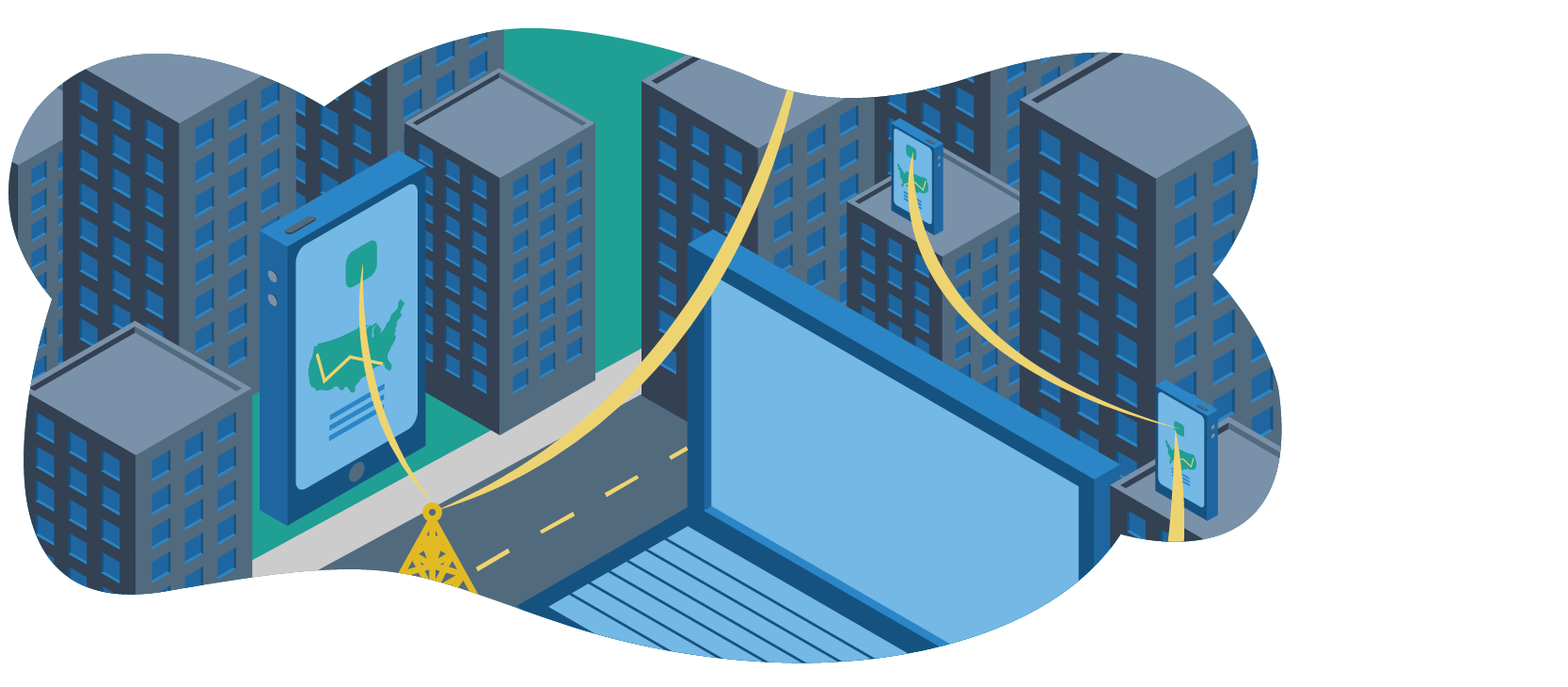
B2B
3D printed buildings3D printed buildings refers to the construction industry’s use of 3D printing technology to fabricate structures. Utilizing this technology, construction can be completed more quickly, with fewer resources and at a lower cost than traditional building methods.
Example: ICON
AI in food tech
Companies in this space tap into food system data sources to build AI tools for a growing list of use cases, including predictive consumer trends, reducing food waste in production facilities and helping consumers find products. The expanded use of AI is being driven by an increase in food system data capture-points.
Example: Gastrograph AI
Autonomous flight
Startups in this space develop technologies to allow for the flying of various aircraft autonomously, including standard planes, helicopters, drones and urban transport vehicles. Autonomous flight could be a solution for riskier types of flying—like crop dusting and urban transportation—and could be a safer, more affordable option in the long run.
Example: Reliable Robotics
Autonomous shipping
Autonomous shipping companies use technologies like computer vision, LiDAR and artificial intelligence (AI) to automate the shipping of goods in the maritime industry. Autonomous ships could decrease the risk of collision, as well as reduce crewing costs.
Example: Wilhelmsen Group
Autonomous trucking
Autonomous trucking companies use technologies like computer vision, LiDAR and AI to automate the long-haul trucking industry. Self-driving trucks typically have well-defined routes, making full autonomy a more realistic option relative to other vehicles.
Example: Tesla
Blockchain real estate
Blockchain real estate uses blockchain and the underlying distributed ledger technology to increase transparency in real estate transactions.
Example: Resaas Services
Cannabis breathalyzers
Cannabis breathalyzers are tools law enforcement agencies can use to test for impairment of drivers potentially under the influence of marijuana.
Example: Hound Labs
Climate risk modeling as a service
Climate risk modeling as a service startups analyze climate data to provide risk assessments to enterprises. As increased global temperatures make weather patterns more unpredictable, these companies provide more stability to business risk modeling. Often leveraging artificial intelligence, applications in this space include flood risk assessments, real estate valuations and agricultural production, among others.
Example: Jupiter
Commercial space launch
Commercial space launch includes companies launching satellite payloads, organizing and providing satellite launch capabilities or developing infrastructure for launch.
Example: Blue Origin
Construction robotics
Construction robotics refers to machines that are used on construction jobsites to help workers with tasks typically completed by humans. Though the complexity of the modern jobsite means that humans will likely always need to monitor and assess building progress, tasks like bricklaying, drywalling, surveying and digging save humans time and physical toil when completed by machines. Given the repetitive nature of these tasks, most startups in this space are exploring forms of autonomy, oftentimes supplementing existing construction machines with “self-operating” software.
Example: Built Robotics
Digital freight brokerage
Digital freight brokerages are online marketplaces that connect shipping entities and truckers via mobile apps.
Example: Convoy
eDiscovery platforms
eDiscovery platforms are used by legal teams to collect, review and parse volumes of digital evidence using data analytics and technology-assisted review (TAR) to identify and tag responsive documents based on keywords and metadata.
Example: Ipro
Election tech
Election technology companies design systems to engage and empower voters to participate in democratic elections. These companies aim to make the process of voting more transparent and inclusive to combat disenfranchisement.
Example: Democracy Live
Electric flight
Companies in the electric flight space are developing hybrid or all-electric powertrains for electrified aerial transportation. Because of the lower energy density of lithium-ion battery technology, electric flight startups are constrained to short-to-medium distance applications. Despite that, electric flight could help decarbonize air transportation overall with primary applications in logistics and passenger transport.
Example: Eviation Aircraft
Food service robots and machines
Companies in this space develop automated machines to assist food service in relation to preparation, food running and vending. These robots and machines save on labor costs by automating food service tasks like food portioning, food prep vending and more.
Example: Picnic
Related report
Q4 2020 Emerging Tech Research: Foodtech
Download reportGhost kitchens
Ghost kitchens are stripped-down commercial kitchens with no dine-in option. Although several varieties of ghost kitchens exist, they all share a common feature: they’re focused exclusively on food delivery.
Example: DoorDash
Indoor mapping
Indoor mapping technologies use floorplans, indoor positioning systems (IPS), and other private data to build comprehensive maps of any indoor space—digitally positioning people and objects in offices, venues, and other buildings.
Example: HERE Global
Industrial workplace safety
Companies focused on industrial workplace safety develop technologies to reduce the likelihood of workplace accidents, which kill an estimated 6,000 people each day. These tools also give employers better ways to monitor the health and safety of their staff.
Example: PrecisionHawk
In-space manufacturing
In-space manufacturing startups are developing the infrastructure and technologies necessary to create and assemble materials in the microgravity conditions above Earth’s atmosphere. The unique conditions of space allow for the production of materials that would otherwise be impossible or too costly to manufacture on Earth, like organic tissue, optical fibers and high-performance electronics. Decreasing costs in launch services are driving the trend, as companies are finding it less cost-prohibitive to fund experiments and commercial endeavors into materials production for use on Earth, on-orbit manufacturing and servicing and space exploration.
Example: Varda Space Industries
Low-Power Wide-Area Networks (LPWAN)
LPWAN is a type of wireless communication network designed to enable long-range communication at a low bit rate between various sensors. The technology is lucrative because it allows owners of sensors to deploy them in a wide geographical area without having to invest in other gateway technologies.
Example: SigFox
Microweather
Microweather forecasts give up-to-the-minute weather conditions for your exact GPS location. These forecasts have applications for individuals and organizations, like farmers who are trying to decide when to plant crops.
Example: Tomorrow.io
Modular construction
Modular construction companies develop residential and commercial buildings by manufacturing partial or whole structures in factories. Later, the structures are shipped to the construction site for installation and finishing touches. This prefabrication technique is not new, but it is becoming more prominent because of new engineering techniques that have lowered the costs and sped up the process. Applications include temporary shelters, backyard guest houses, apartment complexes and even office buildings.
Example: Plant Prefab
Natural disaster preparedness and response
Companies in this space develop technologies to help assist people and businesses that are vulnerable to natural disasters. With severe weather events becoming more frequent due to climate change, these startups offer proactive and reactive measures to minimize loss of life and property during a disaster. Technologies in the space include AI drones and communications platforms to be used in the context of wildfires, floods, earthquakes and storms.
Example: One Concern
Ocean data collection
Startups in the ocean data collection space develop tools and technologies to increase the volume and improve the quality of information related to the Earth’s oceans. Long the domain of government-backed research grants, ocean data collection is becoming increasingly important to sectors like marine logistics, agriculture and fishing and climate resiliency. An enormous portion of the oceans remains unexplored and under-quantified, providing a chance for companies to achieve greater insight and act as consistent data providers.
Example: Salidrone
Resilient PNT
Startups in the resilient PNT space develop PNT—positioning, navigation and timing—technologies to supplement global positioning systems in the event they are taken offline unexpectedly. Companies in this space are developing alternatives like eLORAN, time over fiber and the use of constellations of low earth orbit satellites.
Example: NextNav
Small satellites
Small satellite companies contribute to the expansion of space infrastructure through the design, development and launch of miniaturized satellites. Companies in this space include manufacturers of satellites, satellite components, and propulsion modules, as well as providers of mission services, developers of onboard software and mission control systems, and launch providers and brokers.
Example: Terran Orbital
Smart mirrors
Smart mirrors (or digital or virtual mirrors) combine the reflective quality of mirrors with augmented reality and high resolution displays. This allows users to interact with a digital interface on the surface of their mirror. Smart mirror applications are most prevalent in fitness, beauty, healthcare and consumer retail.
Example: MirrorCache
Smart packaging
Smart packaging systems use embedded sensor technology to monitor packages’ lifecycles through the supply chain.
Example: Blippar
Sports tech
Sports technologies include wearables, biometrics and artificial intelligence technologies for those in pursuit of increased athletic performance or a better fan experience at sporting events.
Example: Hudl
Supersonic travel
Supersonic travel allows air travelers to travel faster than the speed of sound to reach their destinations in half the time. Though this has not been an option commercially since the Concorde was retired in 2003, companies in this space are competing to develop improved modes of supersonic transit.
Example: Boom Supersonic
Sustainable packaging
Sustainable packaging startups develop alternatives to traditional packaging materials, including bioplastics and plant-based polymers. Bans on single-use plastics by local and national governments around the globe created space for the creation of more affordable, sustainable alternatives. Sustainable packaging is part of the circular economy that aims to reuse materials and eliminate waste.
Example: Zume
Urban planning tech
Urban planning tech companies provide solutions that help governments design better cities. With the growth of IoT and cloud computing, city planners have more data than ever to help guide decisions, model proposed designs and visualize urban development. These startups can help with traffic and congestion management, land reclamation, utility layout and climate impacts.
Example: UrbanFootprint
Virtual events
Virtual events companies develop digital platforms to help businesses host all-online or hybrid-online events and conferences. These solutions offer a host of engagement and networking-specific features built on the understanding that the vast majority of attendees—physical or digital—show up to make connections. Though COVID-19 has been an accelerant, founders are optimistic that virtual event hosting will persist because of their ability to reach larger audiences.
Example: Hopin
Warehouse management tech
Warehouse management technologies aid in various form of warehouse management and include autonomous robots, warehouse management platforms, wearables to improve worker safety and health and asset tracking sensors and scanners.
Example: ShipBob
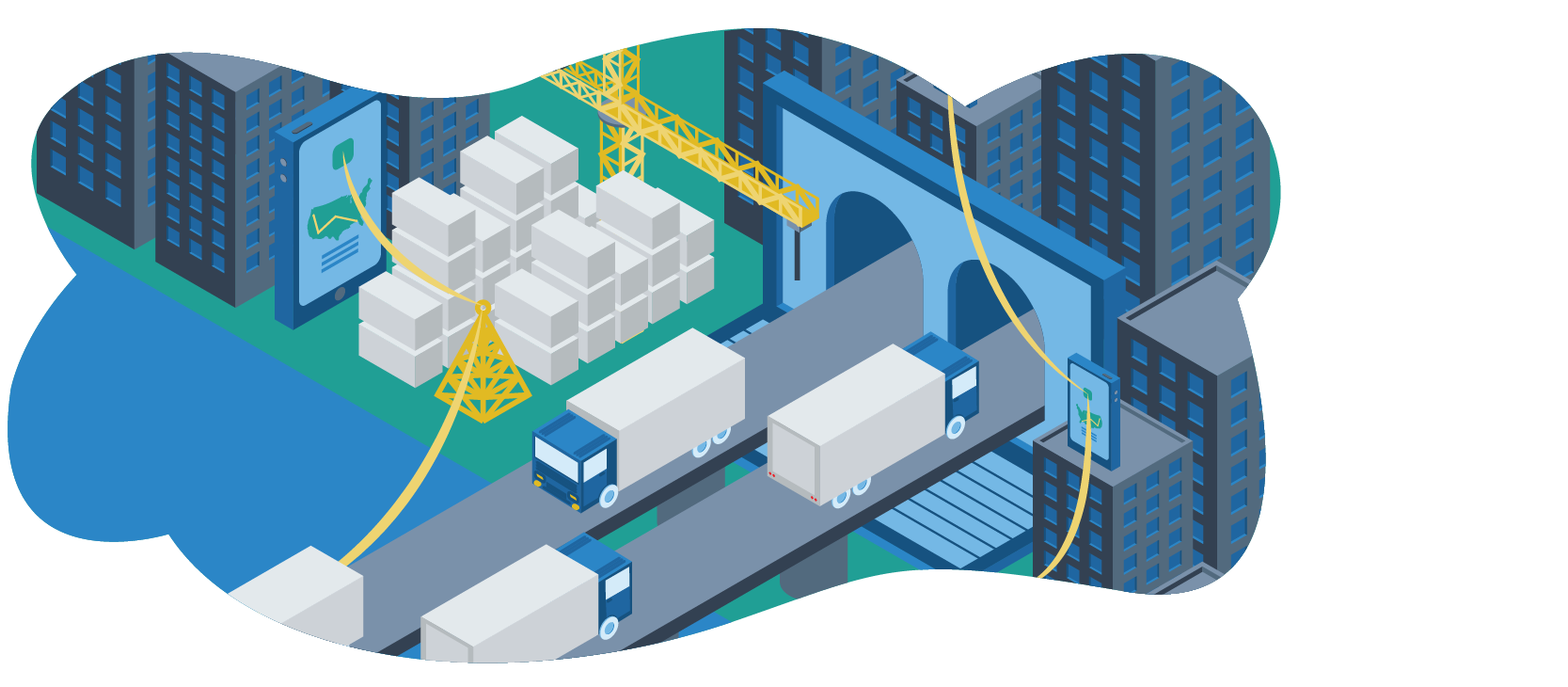
B2C
3D printed foods3D printed food is a way of preparing food in an automated additive way using 3D printers custom-built to handle food ingredients.
Example: Novameat
AI-enhanced learning
Companies in this space use AI to develop better educational materials for students. Artificial intelligence can be used to create more personalized learning experiences at-scale for students who lack consistent access to one-on-one instruction.
Example: Classcraft
Air taxis
Air taxis refer to transportation in vertical-take-off-and-landing (VTOL) aircraft across short distances, generally best suited for urban environments. Companies in this space include both air taxi service providers and eVTOL manufacturers.
Example: Porsche
Related report
Q2 2021 Analyst Note: The eVTOL air taxi startup handbook
Download reportRelated report
Q1 2021 Emerging Tech Research: Mobility tech
Download reportArt trading platforms
Companies in this space facilitate the trading of fine artwork via digital platforms. Many of these platforms aim to democratize fine art investments by fractionalizing ownership—sometimes through tokenization of art assets on the blockchain—dividing the ability to own works of art between multiple parties. Other companies aim to provide greater metrics and transparency into the evolving art market.
Example: Arthena
Auto commerce
Auto commerce companies simplify car ownership by digitizing processes related to purchasing, leasing, and selling, as well as maintenance and repairs.
Example: Vroom
Cannabis beverages
Cannabis beverages are CBD- or THC-infused drinks that range from tea, soda, and juice to beer and wine. They are often marketed as health and wellness products and are gaining popularity because of their convenience and potential health benefits.
Example: BevCanna
Cashierless checkouts
Cashierless checkout is a collection of technologies that make the retail checkout experience faster and easier by relying on computer vision and camera technologies to track what a consumer picks up in a store.
Example: Grabango
Clean meat
Clean meat is meat which has been grown in a cell culture rather than harvested directly from an animal’s body after slaughter. Also called cell-based meat or cultured meat, it has the same characteristics as conventional meat but can be made by growing only the cell types that humans consume—like muscle and fat cells and connective tissue.
Example: UPSIDE Foods
Connected fitness equipment
Connected fitness equipment companies create fitness hardware—often in the form of wearables—that track users’ health and fitness metrics. An alternative to gyms, these fitness experiences have grown in popularity because of their convenience for home use and the ability to pay for them via multi-year financing plans.
Example: Peloton
Electric vehicle platforms
Electric vehicle platform companies develop and manufacture electric vehicles, powertrains and platforms. Sales of electric vehicles are expected to grow significantly in the coming years as battery technology improves and decarbonization becomes a stronger policy priority.
Example: Fisker
End-of-life planning
End-of-life planning startups provide services and technologies related to death. Estate planning and funerals have historically been discretely handled, but a younger generation of entrepreneurs are looking to make the topic more transparent—hoping to provide more options and peace of mind for those dealing with loss. Applications in this space include virtual memorial services, sustainable burial and cremation, remembrance items and estate planning services.
Example: Trust & Will
Hyperloop
Hyperloop is a theoretical mode of transportation whereby a pod—containing passengers or freight—is accelerated through a sealed system of tubes with minimal air pressure. The lack of air resistance means that Hyperloop could efficiently transport pods at hypersonic speeds and hypothetically create a cheaper, more sustainable and faster mode of transportation between cities.
Example: Hardt
Income share agreements (ISA) education
Income share agreements (ISA) education include technology-focused educational institutions that allow students to pay a percentage of their future income in lieu of upfront tuition.
Example: Prenda
Insect-based foods
Insect-based food companies use insects as a key ingredient to produce food and drinks like beer, pasta, energy bars and more. Growing insects for human consumption is touted as sustainable, cheap and nutritious, all while having a smaller environmental impact than conventional meats.
Example: Entomo Farms
Pandemic travel
Pandemic travel startups represent a diverse collection of travel, tourism and hospitality services whose value proposition has either directly or indirectly factored in the new realities of traveling during a pandemic. In light of COVID-19, these companies have adapted by developing new health and safety-focused services or by doubling down on travel experiences that inherently facilitate social distancing. Applications in this space include contactless travel tech, campervan rentals, financial flexibility solutions, remote tours, camping rentals and member-only vacation clubs.
Example: Outdoorsy
Smart clothing
Smart clothing uses micro-sensors embedded into traditional clothing items, typically to track biometric data. This tech-enabled clothing allows people to monitor their physiological functions conveniently and discreetly.
Example: Under Armour
Smart home assistants
Smart home assistants are platforms that integrate with smart home device application program interfaces (APIs) to enable home automation through a universal control platform.
Example: Hygge Power
Smart locks
Smart locks are digitally-enabled door locks that connect to apps and central access management systems. In some cases, they use biometrics for instant access.
Example: Mobike
Smart jewelry
Smart jewelry is a type of wearable technology that monitors users’ vital signs while looking aesthetically like typical jewelry.
Example: Oura Health
Social audio
Social audio startups develop communication-oriented mobile applications that emphasize audio content as the primary method of sharing and engaging with other users. Companies in this space believe that audio as a medium, distilled from video or text, represents an opportunity—in part because of the growth of headset hardware. Applications in this space include social podcasting, productivity collaboration, private chat and social media.
Example: Clubhouse
Space tourism
Space tourism companies offer recreational space travel. Space tourism is in a nascent stage with trips remaining infrequent and highly expensive. Many of these companies hope to make recreational space travel available and affordable to more people over the coming years.
Example: Virgin Galactic
Sustainable fashion
Sustainable fashion companies create clothing using fewer or alternative materials that contribute less waste to the environment.
Example: Everlane
Sustainable tourism
Sustainable tourism is the idea that travel should have a positive impact on the environment, culture and economy of the place being visited. Companies in this space encourage a sustainable ethos by curating tours and experiences, giving some proceeds back to local communities and causes, and by practicing and encouraging environmental stewardship.
Example: Intrepid Travel
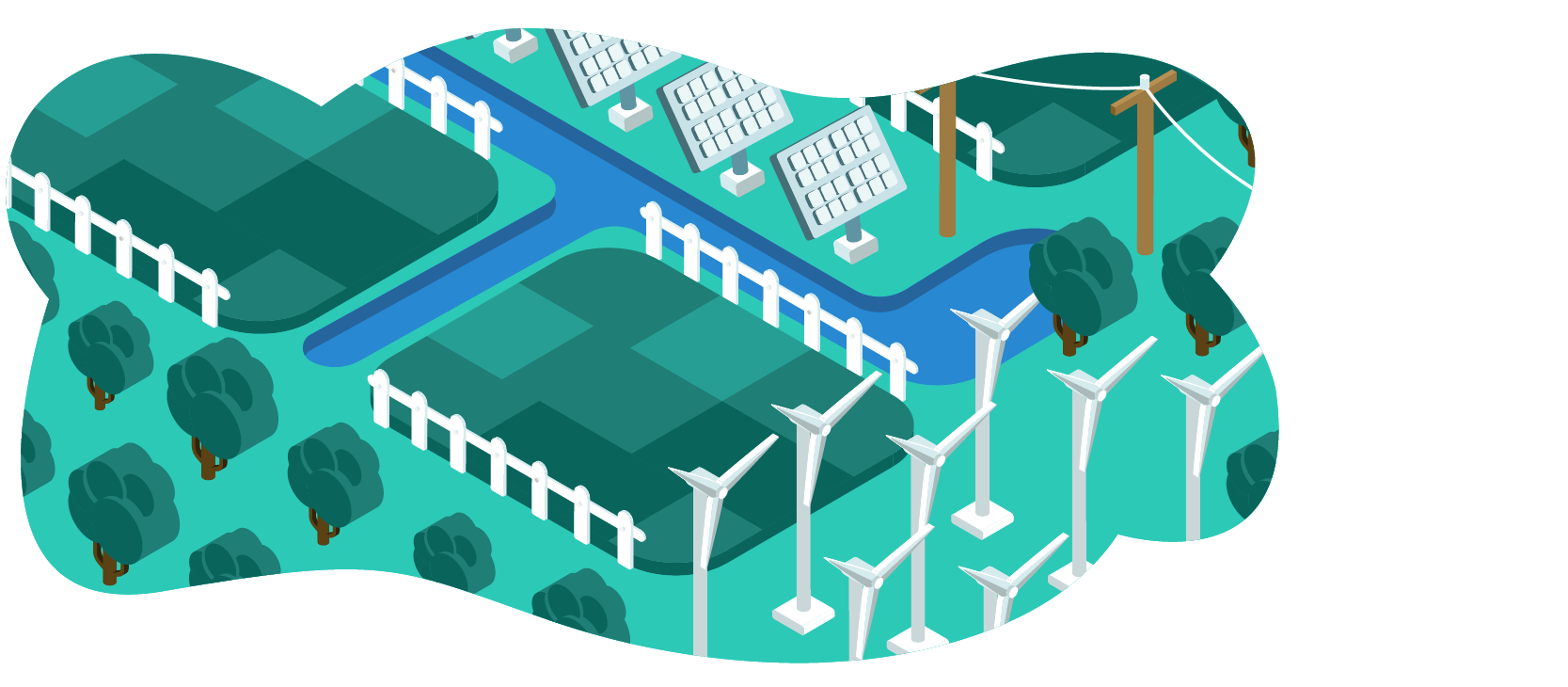
Energy
Alternative battery techAlternative battery technology is an industry based in the development of improvements or alternatives to the traditional, lithium-ion battery. Companies in this space are typically working on improvements and alternatives that involve new materials incorporating advances in chemistry and material sciences.
Example: Fuel Positive
Batteryless IoT sensors
Batteryless Internet of things (IoT) sensors draw power from their environment—either through electromagnetic signals or small solar cells—and enable IoT sensing in low-power environments. Companies in this space are developing batteryless and no-maintenance sensing solutions for the fundamental limitations of batteries.
Example: Wiliot
Carbon capture and removal
Carbon capture and removal refers to the process of actively capturing carbon atoms and removing them from the atmosphere via storage or utilization in other forms. Technologies in this category are centered on climate change mitigation and include afforestation, biochar, carbon sequestration and direct air capture.
Example: CO2 Solutions
Concentrated solar power
Concentrated solar power (CSP) is the process of harnessing solar thermal energy using an arrangement of mirrors to heat a specific focal point that collects and stores the heat energy to power a turbine that generates electricity. CSP projects are often used in utility-scale scenarios with the goal of providing power directly to the energy grid, though future uses are expected in local power generation for industrial sites.
Example: Heliogen
Electric vehicle charging stations
Companies in this space are building electric vehicle charging infrastructure to support electrification of the mobility sector. The number of charging outlets has significantly expanded as awareness and adoption of electric vehicles has increased and is expected to continue to grow as large automakers make investments into the development of electric vehicles.
Example: Blink Charging
Energy storage
Energy storage technologies improve our ability to store energy for use on-demand, especially as sources of energy expand into renewables. Companies in this space use many approaches, like batteries, thermal, pumped hydropower and other mechanical storage methods.
Example: Azelio
Fusion energy
Fusion energy is a proposed form of power generation that would use heat from nuclear fusion reactions to generate electricity. It has the potential to eliminate dependence on fossil fuels, but the core technology is still theoretical and many startups in the space are focused on finding pragmatic applications of the underlying theory.
Example: Bruker
Hydrogen energy
Companies in this space are developing methods, machines and materials to harness the power of hydrogen to generate energy. Its zero-emission output and high energy density make hydrogen a promising energy source, but companies are still looking for a way to reduce the cost of production.
Example: Plug Power
Lithium extraction technology
Companies in the lithium extraction technology space are developing novel solutions to the problem of mining lithium. Historical approaches are slow and use an unsustainable amount of water, but newer solutions propose to mine at greater yields with less water and often in areas previously considered inaccessible.
Example: Lilac Solutions
Renewable ocean energy
Renewable ocean energy describes efforts to generate electricity from the ocean using waves, tides, salination and temperature differences. The movement of water in the world’s oceans offer an untapped source of kinetic energy that companies in this space hope to capture. Currently, companies are testing competing iterations of technologies while working toward bringing costs of ocean power down to compete with wind and solar.
Example: Minesto
Smart grid
The smart grid refers to digital technology that allows for two-way communication between power utilities and their customers, enabling the more efficient transmission of electricity.
Example: Power Ledger
Small modular reactors
Small modular reactors (SMRs) are nuclear reactors designed with modular technology using module factory fabrication, pursuing economies of series production and short construction times. The small size of these reactors makes them easier to construct, safer and more easily deployed to remote areas that have intense energy needs.
Example: Babcock & Wilcox Enterprises
Waste-to-energy
Waste-to-energy companies develop techniques to convert organic and inorganic waste into usable energy like hydrogen, biofuels and syngas. These startups develop technologies to improve traditional incineration, which expends energy and creates unwanted pollutants. Entrepreneurs in waste-to-energy believe that waste is a serious carbon emitter that warrants significant waste removal efforts and technologies.
Example: Sierra Energy
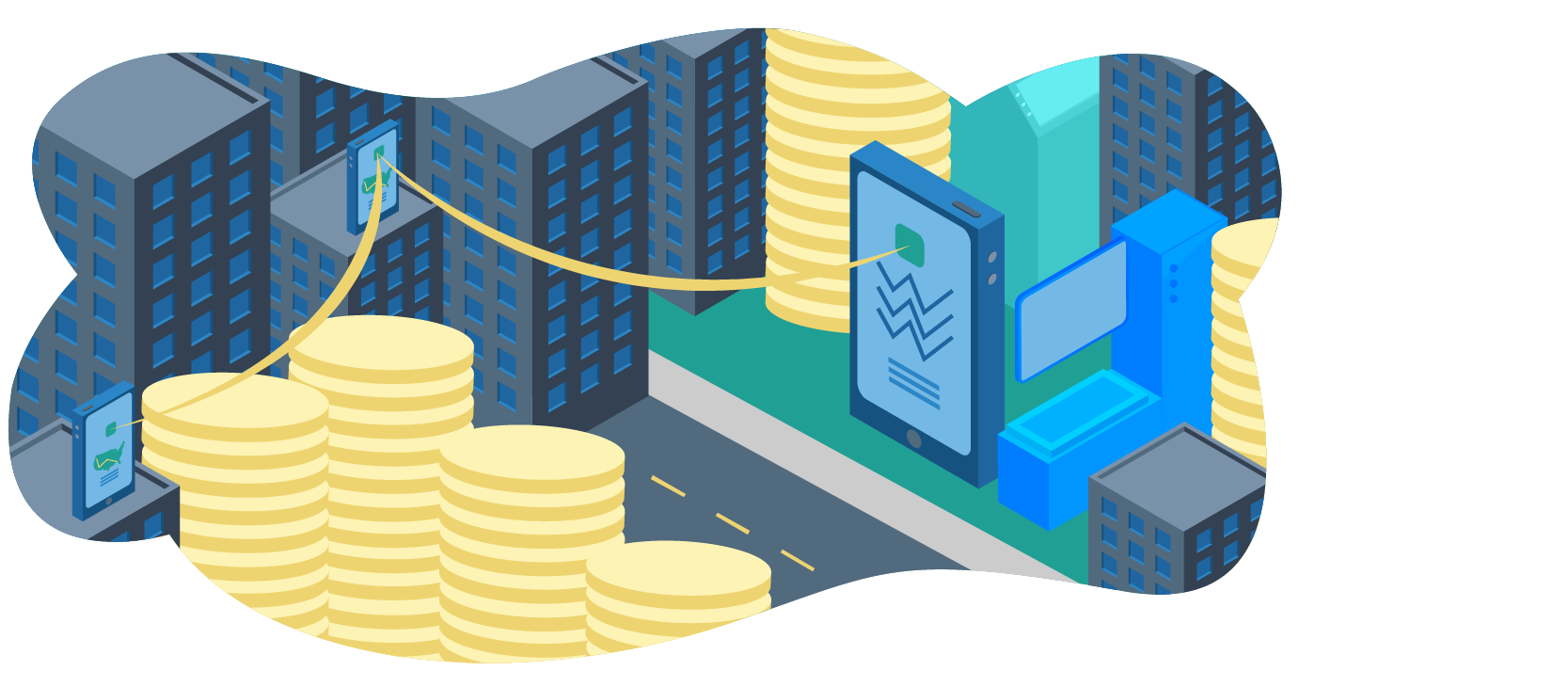
Finance
Alternative home financingCompanies in this space provide new financial options for people who aspire to own a home, but who may not have the credit history or down payment necessary to undertake the traditional mortgage process. Alternative home financing startups primarily offer co-investment business models where the company will buy the majority of a home in partnership with an aspiring homeowner with the understanding that they will gradually earn equity in the home and be able to buy it out from the company at a later point.
Example: Divvy Homes
Banking as a service
Banking as a service (or BaaS) encompasses technologies that enable non-banks to offer core banking services like deposits, checking and savings accounts or loans to end-users. BaaS companies allow third parties to connect with banks’ systems via application programming interface (API) to build banking offerings on top of already regulated infrastructure.
Example: Factom
Conversational banking
Conversational banking includes platforms that facilitate consumer interactions through voice, text or other visual interfaces—typically with a non-human—to conduct banking queries and transactions.
Example: Finn.ai
Related report
Q2 2021 Emerging Tech Research: Fintech
Download reportDecentralized finance
Decentralized finance encompasses conventional financial tools and services built on blockchain. Companies in this space develop open lending protocols, insurance and investing platforms, decentralized prediction markets and other blockchain-based alternatives to traditional finance.
Example: tZERO
Microinsurance
Microinsurance providers offer flexible, consumer-centric insurance products. Traditionally, modes of microinsurance—like microloans and microcredit—is thought of as a product for people in developing areas, but this space also encompasses companies innovating in personalized, micro-policy plans that cover international travel, cycling, fitness, mobile and other niche policies.
Example: Metromile
NFTs
Non-fungible token (NFT) startups are developing the protocols, infrastructure, marketplaces and applications necessary to enable virtual ownership of unique digital assets. NFTs are growing in popularity due to the global rise in legitimacy of cryptocurrencies and as a viable way to ensure trusted and authenticated ownership using the blockchain. Companies in this space enable the mining of new NFTs, developing online gaming, art, and collectible ecosystems, and building marketplaces to allow for a more streamlined exchange of NFT assets.
Example: Enjin
Payment facilitator enablers
Payment facilitator (PayFac) enablers are payment systems that allow software providers to integrate payment offerings and capture additional revenue by becoming the merchant of record in their own transactions. Using the PayFac enabler model, businesses can offer merchant services by underwriting sub-merchants.
Example: FINIX
Real estate crowdfunding
Startups in this space are democratizing access to property investing through the use of equity and debt crowdfunding models and eREITs. Traditionally an attractive alternative investment, property is hard to access for lower-networth individuals and non-accredited investors. These platforms enable people to contribute as little as $500 toward a real estate project or fund with returns coming from either rental income or interest payments on mortgages.
Example: Roofstock
Security deposit alternatives
Companies in this space provide alternative options to traditional security deposits which can hamstring cash-strapped renters with an upfront financial obligation. Many cities are expected to pass laws requiring landlords to provide options beyond security deposits—like surety bonds and lease insurance. These options are technically more expensive than a security deposit, but companies are banking on tenants caring more about their cashflows.
Example: LeaseLock
Youth banking
Youth banking startups provide parent-monitored digital banking services for children and teenagers. Increased digitization in financial services has made the predominantly cash transactions between parent and child all the more peculiar, necessitating a digital solution that enables parents to more easily disburse pocket money, teach their kids about financial literacy and track their child’s spending. Companies in the space are predominantly neobanks, generally providing a physical card connected to a mobile app that allows users to track their total balance, complete money transfers and create savings goals.
Example: Greenlight Financial Technology
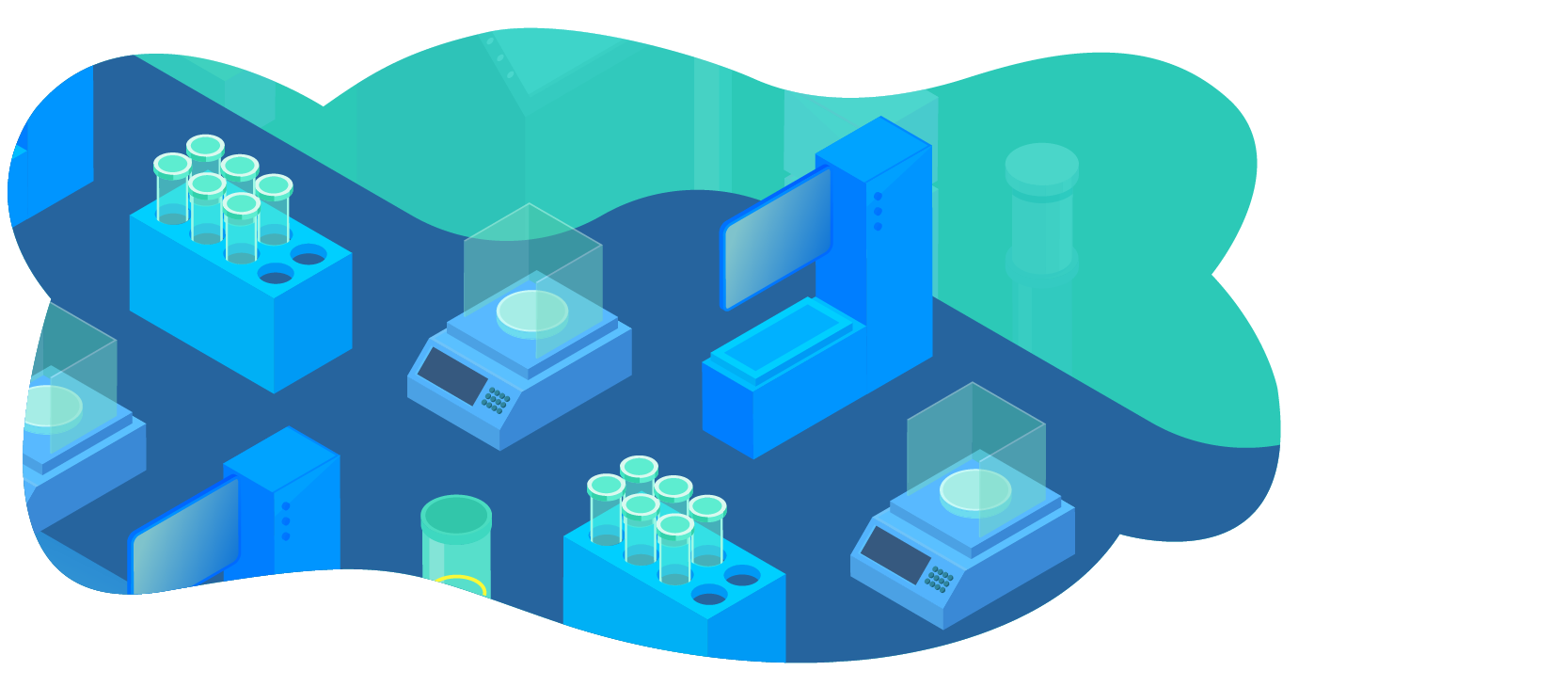
Healthcare
AI-powered drug discoveryAI-powered drug discovery companies research and experiment with artificial intelligence to discover new pharmaceuticals and drug therapies. AI systems sift through millions of chemical compounds and isolate the most promising at a fraction of the time it takes traditional methods. No drugs created using AI are on the market, but proponents hope technological advances will decrease development times and enable pharma companies to develop drugs in previously unprofitable areas.
Example: BenevolentAI
Anti-aging
Anti-aging companies research and develop restorative treatments to combat the effects of aging and increase lifespan. Research areas include genomic instability, epigenetic alteration, stem cell exhaustion and more.
Example: Scholar Rock
Assistive tech
Assistive technologies are equipment, software, or products used to increase, maintain, or improve the functional capabilities of persons with disabilities. A new wave of companies in this space are using emerging technologies like VR/AR, AI and robotics to jumpstart innovation.
Example: Aira
CRISPR diagnostics
CRISPR diagnostics refer to the use of the gene editing tool for diagnostic purposes. The underlying science relies on CRISPR’s ability to isolate snippets of genetic material it has been programmed to find. In theory, this technology could produce diagnostic results quicker, cheaper and with fewer trained professionals needed to administer the tests.
Example: Mammoth Biosciences
Fertility tech
Fertility technologies are creating tech-oriented medical solutions for couples struggling to conceive. These technologies include sperm and egg freezing services, hormone testing systems and monitoring platforms.
Example: Future Family
Gene therapies
Gene therapies insert sections of DNA into a patient’s cells to correct damaged or abnormal genes. Gene therapies are an exciting advancement because researchers in the space could eventually lead to cures for cancer, HIV and heart disease.
Example: Moderna Therapeutics
Medical exoskeletons and prosthetics
Medical exoskeletons and prosthetics companies develop mechanically powered prothesis and exoskeletons to be used for medical purposes.
Example: ReWalk Robotics
Medical robotics
Medical robotics are robots used in healthcare settings with the benefit of providing services more precisely or consistently than human doctors could. Applications include surgeries, rehabilitation, telepresence, transportation and general patient care.
Example: Intuitive Surgical
Mental health tech
Mental health technology companies develop software and hardware solutions to help individuals take better care of their mental health and enable practitioners to better monitor the mental health of their patients.
Example: Regroup
Nanomedicine
Nanomedicine is the medical application of nanotechnology—from the medical application of nanomaterials and biological devices to nanoelectronic biosensors.
Example: Nanobiotix
Neurotechnology
Neurotechnologies seek to improve or modify our understanding of cognitive function, including consciousness and thought. In patients, its distinct technologies—including brain-machine interfaces, neural implants, neuromonitoring, neurostimulation, and neuroprosthetics—are used to restore, improve, or alter typical brain function.
Example: Neuralink
Psychedelics
Companies in the psychedelics space are harnessing mind-altering substances to treat mental illnesses like addiction, depression and post-traumatic stress disorder. Substances like psilocybin and LSD have long been outlawed by the US government, but changing cultural attitudes and recent scientific studies have re-opened the door for their potential authorization. Psychedelics startups are primarily developing psychoactive treatments for mental health conditions but may also operate clinics to provide said therapies or develop software to help clinics manage patient treatment.
Example: ATAI Life Sciences
Sleep tech
Sleep technologies encompass a variety of technologies whose goals are to improve the quality of a person’s sleep. Examples of sleep technology include tracking sensors, smart mattresses and sleep-monitoring headbands.
Example: Casper
VR health
Companies in this space use virtual reality (VR) to provide innovative therapies and treatments to various healthcare issues. Uses of VR in healthcare include education, therapy, rehabilitation and even mindfulness.
Example: MindMaze
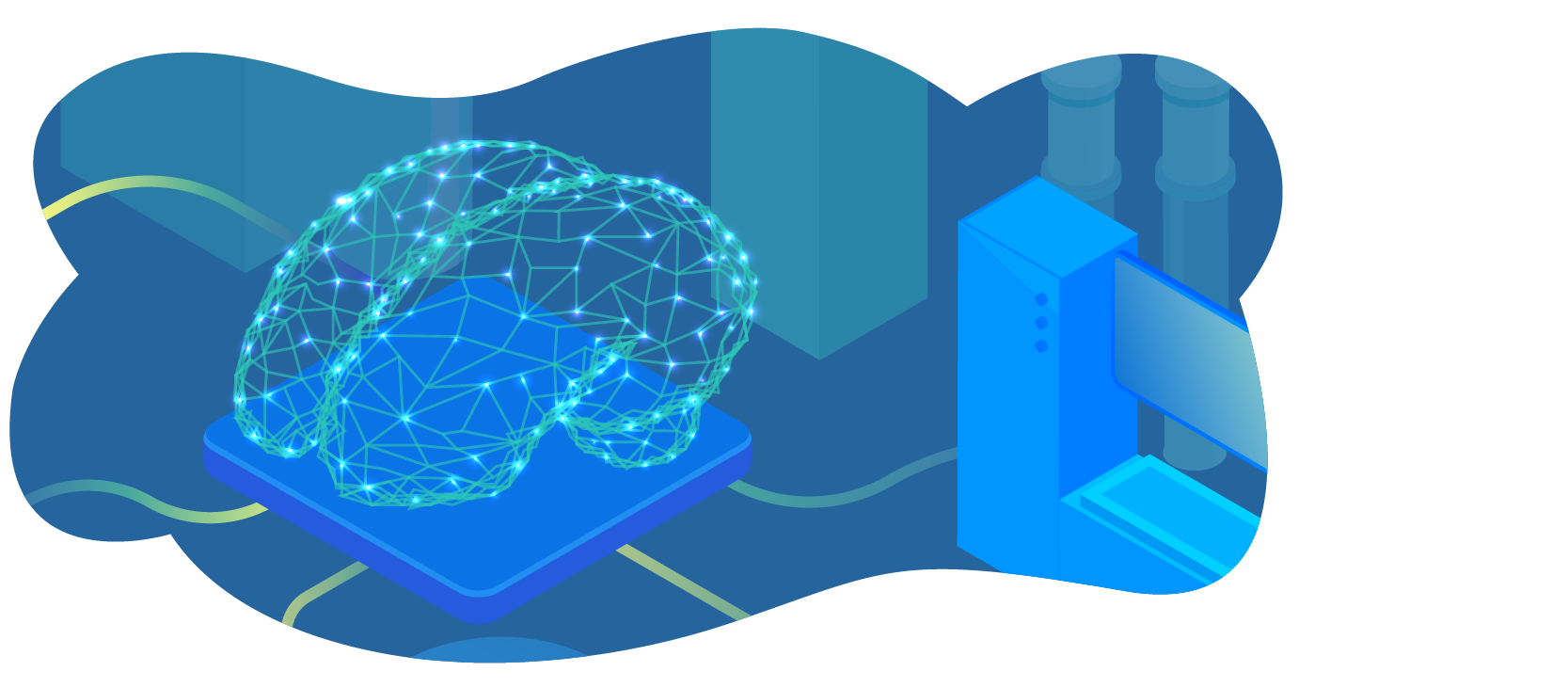
IT
4D printing4D printing utilizes special materials and sophisticated designs that are programmed to prompt the 3D printed object to change its shape post-production. Companies in this space are developing 4D printing technologies and relevant materials such as chemicals, electronics, particulates or nanomaterials.
Example: Autodesk
AIOps
AIOps refers to the use of big data analytics and artificial intelligence (AI) to provide visibility into the state and performance of the IT systems that businesses rely on.
Example: Broadcom
Autonomous delivery
Autonomous delivery involves the use of ground and air-based drones to facilitate last mile delivery in urban areas or other confined areas. These companies hope to save costs on human capital by managing a fleet of autonomous robots to complete deliveries.
Example: Nuro
Autonomous vehicle simulation
Autonomous vehicle simulation focuses on virtually simulating road, traffic and vehicle conditions in order to develop self-driving cars.
Example: Lyft
Cloud gaming
Cloud gaming is the hosting of video game-related content for a subscription fee, effectively decentralizing the local hardware normally required to play video games into the cloud. Though the technology requires a stable and fast internet speed, it has the potential to expand the gaming market.
Example: PlayGiga
Cloud workload protection
Cloud workload protection platforms enable threat detection and codebase hardening for applications in container-based, serverless and virtualized environments.
Example: NortonLifeLock
Cognitive computing
Cognitive computing companies develop platforms built on self-learning algorithms that use data mining, pattern recognition and natural language processing to mimic the way the human brain works.
Example: Afiniti
Computational storage
Computational storage is a new IT architecture whereby compute functions are added to the data storage layer, rather than moving the data up to the host CPU for processing as in traditional computing.
Example: Xilinx
Contract management automation
Contract management automation includes companies using artificial intelligence (AI) and algorithms to streamline the creation, negotiation, renewal and maintenance of legal contracts.
Example: Clause
Crowdsourced testing
Crowdsourced testing is an emerging type of software testing that leverages a large group of participants to remotely test websites, mobile apps and software. Using this approach, software can be tested from a variety of perspectives which makes it more reliable, cost-effective, fast and bug-free.
Example: Applause
Database sharding
Database sharding is a type of relational database architecture that partitions databases into smaller chunks that can be spread across multiple servers and stitched together more easily than other monolithic databases.
Example: NuoDB
Digital avatars
Used across gaming, social media and enterprise communications, digital avatars are animated representations of users' physical bodies in the virtual world. Enterprises are exploring the potential for avatars to handle various customer service tasks, while the success of virtual Fortnite and Animal Crossing events has shown the potential of avatar engagement in entertainment scenarios.
Example: Soul Machines
DevSecOps
DevSecOps encompasses platforms that enable software developers to embed security protections within their code, test their code’s vulnerabilities on a regular basis and deploy application updates securely.
Example: Snyk
DNA data storage
DNA data storage companies are pioneering methods to encode digital data into synthetic DNA as an alternative to silicon. The proliferation of technologies such as smartphones, sensors and cloud computing has resulted in an explosion of data, with some estimates suggesting that we will outproduce our ability to store all of the data we create as soon as later this decade. In response, companies are increasingly looking to DNA, a molecule that excels at storing large volumes of information for long periods of time with remarkable durability.
Example: DNA Script
Edge computing semiconductors
Edge computing semiconductor companies are developing novel semiconductor architectures enabling artificial intelligence and machine learning (AI and ML) inferencing in edge devices. Edge computing semiconductors can be used in battery-powered and wired edge devices, as well as some datacenter applications.
Example: Kneron
FinOps
FinOps is the integration of financial measuring software into the application development process. Companies in this space develop platforms designed to access and analyze the costs of cloud services, enabling firms to better plan, budget and forecast consumption-based spending on cloud resources.
Example: Cloudability
Generative AI
Generative AI is the use of artificial intelligence (AI), statistics and probability in applications to produce a representation or abstraction of observed phenomena. This space is expected to make contributions to auto programming, content development, visual arts, and other creative, design, and engineering activities.
Example: Sensity
Graph databases and analytics
Companies in this space are developing platforms which provide for the dedication, analysis and storage of complex patterns of relationships between data elements. Though graph capabilities have existed in various forms for decades, increased experience, platform innovation and accelerated usage of AI have all increased the importance of graph technologies. Offerings in this space include graph databases, knowledge graphs, metadata aggregation and other graph analytics platforms.
Example: Neo4j
IoT security
IoT Security includes platforms that are designed to safeguard connected devices and networks. Platforms in this space increase the visibility of distributed assets and enable security policy enforcement at the network level.
Example: Vectra
LiDAR
LiDAR is a surveying method that measures distance by sending out beams of laser light and measuring the reflections with a sensor. Autonomous vehicles are a key end-market use case for this technology.
Example: Velodyne LiDar
Low-code and no-code development platforms
Low-code and no-code development platforms expedite the creation of new applications with minimal coding requirements and offer tools for non-programmers to create their own apps. These platforms use a combination of “drag and drop” graphical interfaces and prebuilt models and templates that enable non-developers to create software.
Example: BRYTER
Next-gen network security
Next-gen network security encompasses software-based secure networks that protect expanding enterprise perimeters. Companies in this space develop platforms for software-defined wide-area networking security, browser isolation and secure web gateways.
Example: iboss
Related report
Q1 2021 Emerging Tech Research: Information Security
Download reportPasswordless authentication
Passwordless authentication describes an authentication method whereby a user can access secured information without entering or remembering a password or other knowledge-based factor. The growing prevalence of account takeover attacks and enterprise-level data breaches are forcing companies to reassess their security strategies.
Example: Hypr
Post-quantum cryptography
Post-quantum cryptography (PQC) techniques use software algorithms to encrypt messages on standard computers in a manner that is resistant to being broken by quantum computers. Companies in this space develop software and devices with encryption protocols that do not rely on the use of discrete logarithms.
Example: ISARA
Quantum computing
Quantum computers utilize quantum-mechanical phenomenon to encode information into quantum states and process vast numbers of calculations simultaneously. Companies in this space develop and produce quantum computers, components and related emerging technologies.
Example: D-Wave
Robotic process automation
Robotic process automation is when an algorithm or computer software performs actions usually carried out by a human to complete rule-based tasks.
Example: UiPath
Security orchestration, automation and response (SOAR)
SOAR platforms utilize disparate technologies to gather data and security alerts from different sources and automate responses to security log data to remediate breaches. SOAR replaces slow, manual analyst intervention in conventional incident response processes with machine-speed decision making.
Example: Splunk
Service mesh
Service mesh is a software infrastructure solution that allows firms—who face increasing complexity in monitoring and securing independent services—to better manage microservices.
Example: HashiCorp
Swarm AI
Swarm AI companies algorithmically analyze a group of real-time human inputs to optimize decisions or make predictions. The approach is based on swarm/hive mind behaviors in nature.
Example: iFuture Robotics
TinyML
TinyML refers to the development of machine learning algorithms capable of performing on-device sensor data analytics at extremely low power. Today, much sensor data is ignored due to cost, bandwidth, or power constraints. Some applications include mobility sensors ingesting real-time traffic data to reduce congestion, monitoring retail shelves and sending immediate alerts for restocking and monitoring livestock health to prevent disease.
Example: Xnor.ai
V2X
V2X (connected-vehicle-to-everything communication) technologies allow vehicles to communicate with the traffic system around them. It represents the next evolution of autonomous vehicles, where vehicles are not just observing their surrounding environment—but also communicating with it.
Example: Valens

Materials and Resources
Cellular agricultureCellular agriculture is the production of agricultural products from cell cultures to design and create new methods of producing proteins, fats, and tissues that would otherwise come from traditional agriculture.
Example: Impossible Foods
Desalination tech
Desalination technologies focus on increasing efficiency or cost-effectiveness of desalinating ocean water into fresh water. With the increasing scarcity of access to fresh water, desalination technologies may be crucial to supporting populations in drought-prone areas.
Example: Gradiant
Indoor farming
Indoor farming is the growing of crops or plants—usually on a large scale and using technologies like hydroponics and artificial light—in an enclosed facility. Produce is often stacked vertically to maximize output and the controlled environment means that growing can happen year round. Companies in this space include growers and facilities, makers of the equipment inside and creators of the software to manage them.
Example: AeroFarms
Lithium ion battery recycling
Companies in this space are designing technologies and processes to recycle lithium ion batteries more efficiently. Already ubiquitous in consumer tech products and growing thanks to electric vehicles, fewer than five percent of lithium ion batteries are recycled today, creating sustainability and economic opportunities.
Example: Li-Cycle
Livestock health
Livestock health companies support farmers and livestock caretakers through solutions dedicated to animal monitoring, genomics, breeding, feeds and pharmaceuticals.
Example: Caribou Biosciences
Mining tech
Mining tech companies are developing technologies to assist with the automation, expediting and yield of mining processes. As demand for consumer technologies and renewable energies increase, the need for more resources will put greater demands on mining production. The solutions in this space lean on robotics, artificial intelligence and digital twins to help mining companies meet increased demand.
Example: NextOre
Reforestation
Reforestation startups develop technologies and provide services relate to reforestation and forestry management. The acceleration of both climate change and biodiversity loss has propelled governments and private actors to respond quickly—in this case by restoring and maintaining trees across the world in areas where they once thrived, enabling more species to flourish and carbon to be captured at greater rates. Types of companies in this space include drone-based replanting, satellite and AI-supplemented imaging, and carbon offset programs.
Example: Dendra Systems
Regenerative agriculture
Regenerative agriculture startups adopt farming and grazing practices that help reverse climate change through rebuilding soil organic matter and restoring degraded soil biodiversity. Companies in this space primarily develop programs to encourage farmers—through carbon payment systems—to institute regenerative agricultural practices. This space is seeing increased attention as pressure on the agricultural sector grows to reduce its carbon intensive processes.
Example: Cooks Venture
Smart waste management
Smart waste management companies develop tech-oriented solutions that improve the efficiency and effectiveness of traditional waste management, including waste bins with sensors, database management and logistics platforms, and robots and computer vision systems that sort trash and recycling.
Example: Olio
Ready to discover PitchBook’s Emerging Spaces?
Not a PitchBook user yet? Request a free trial.
Comments:
Thanks for commenting
Our team will review your remarks prior to publishing.
Please check back soon to see them live.